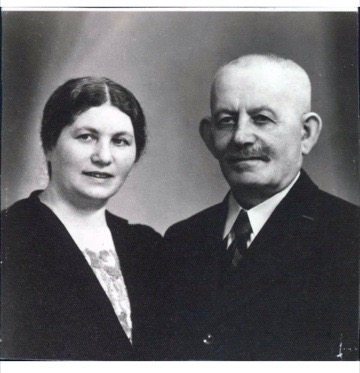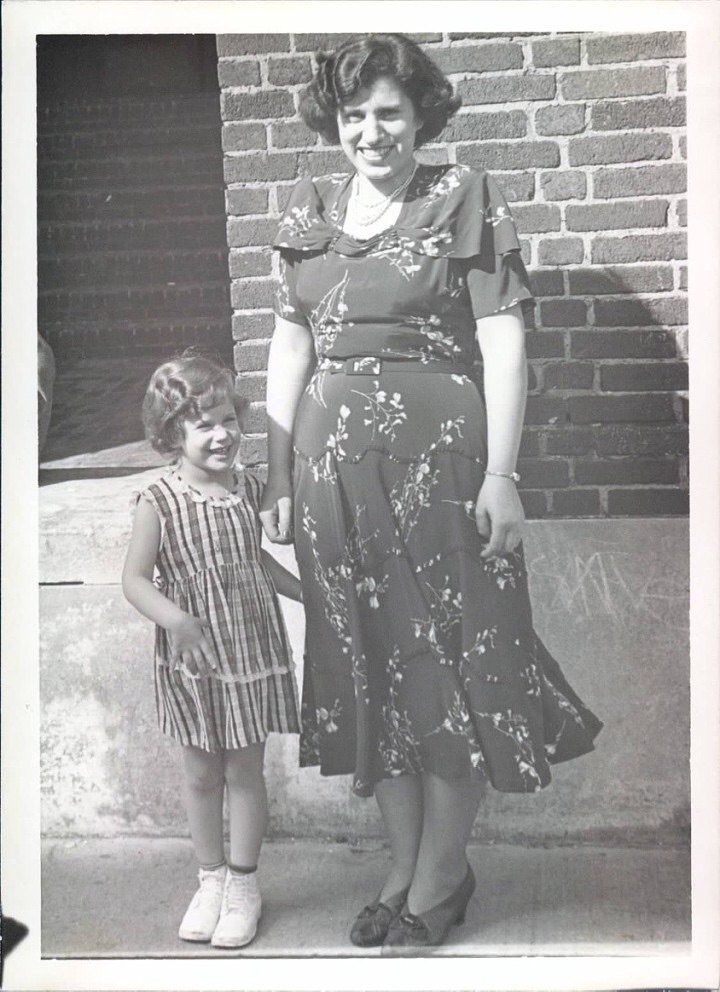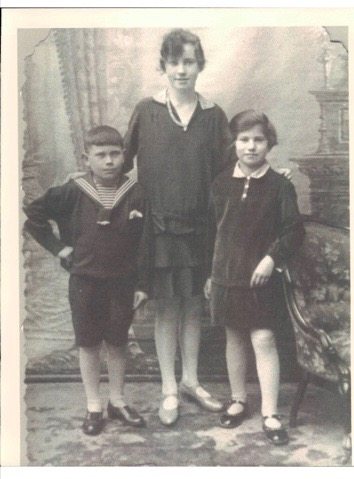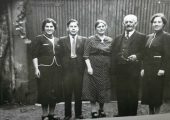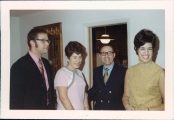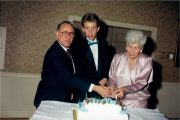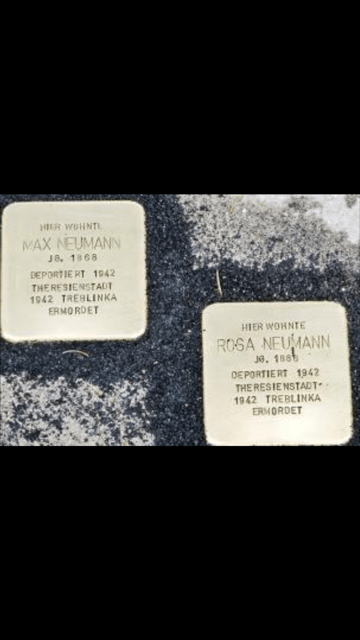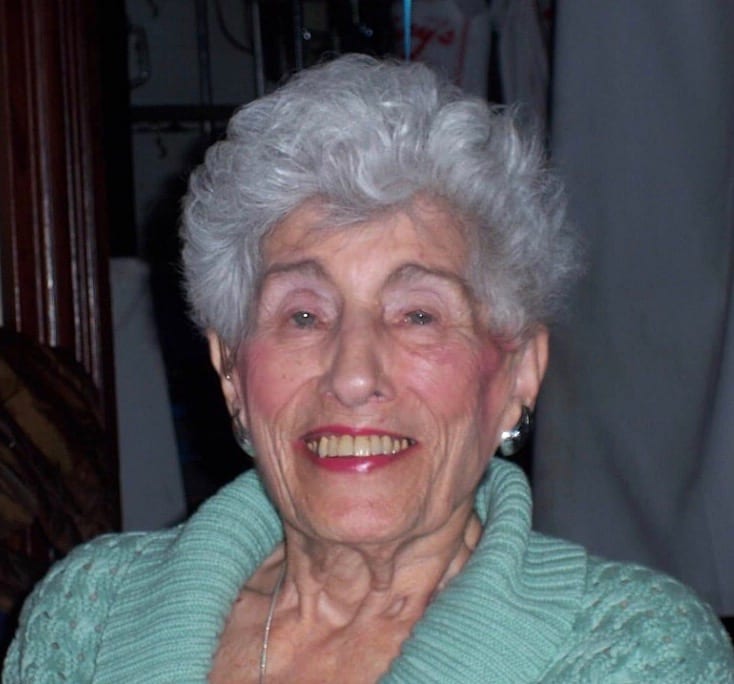- Local Survivor registry
- MARGOT SCHWAGER
- Local Survivor registry
- MARGOT SCHWAGER
Survivor Profile
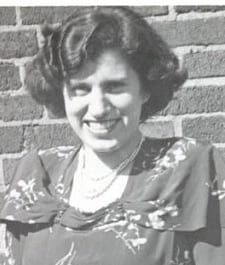
MARGOT
SCHWAGER
(1920 - 2012)
PRE-WAR NAME:
MARGOT NEUMANN
MARGOT NEUMANN
PLACE OF BIRTH:
GROSS OSTHEIM, GERMANY
GROSS OSTHEIM, GERMANY
DATE OF BIRTH:
NOVEMBER 7, 1920
NOVEMBER 7, 1920
LOCATION(s) BEFORE THE WAR:
GROSS OSTHEIM, GERMANY
GROSS OSTHEIM, GERMANY
LOCATION(s) DURING THE WAR:
NEW YORK CITY (1938)
NEW YORK CITY (1938)
STATUS:
SURVIVOR, REFUGEE
SURVIVOR, REFUGEE
RELATED PERSON(S):
FRED SCHWAGER - Spouse (Deceased),
NORBERT NEUMANN,brother (Deceased),
HERTA NEUMANN, sister (Deceased),
MAX NEUMANN - Father (Deceased),
ROSA NEUMANN - Mother (Deceased),
HARRIET SCHWAGER ROSEN - Daughter,
DAVID ERIC SCHWAGER - Son,
RENEE SCHWAGER - Daughter,
GENE ROSEN - Son-in-law (Deceased),
MICHAEL ROSEN - Grandson,
JEFFREY ROSEN - Grandson
-
BIOGRAPHY BY NANCY GORRELL
Margot Schwager lived in the small town of Gross Ostheim, Germany, outside of Frankfurt. She was born there on November 7, 1920. Her parents, Max and Rosa Neumann were kosher butchers and they owned cattle. They were very well liked in the community and had a lot of Jewish and non-Jewish friends and neighbors. When Hitler came into power, Margot and her brother, Norbert and their sister Herta were no longer allowed to go to their school. They were sent to a Jewish school in Furth. They got into that school because a distant cousin was a professor there, Louis Kissinger (Henry Kissinger’s father). Margot lived with the Kissingers when she went to school in Furth. In early 1938 Margot’s parents sent her and her brother to the United States and said they would close the business and follow. They were able to get visas for their children. Margot had three aunts at the time residing in New York: aunt Betty and aunt Ava Stern (twins) and aunt Lena Weinstock. Margot lived with aunt Betty in Washington Heights. She was 18 when she came here. She immediately got a job as a live-in governess in Scarsdale, in a Jewish home. When her sister, Herta got married in 1941, she had a permanent place to live in New York City. At that time, Margot got a job as a worker in a shoe factory. It was there she met her future husband, Fred Schwager. They got married in January 1945, and had their first child, Harriet, in November 1945. Harriet was named after Hilda, Fred’s deceased sister.
During the war, Margot’s parents ended up being hidden in a non-Jewish home by their good friends, and then they were taken in 1942 to concentration camps. They were in two concentration camps. The first one was Theresienestadt and the second one was Treblinka. Most of the other members of Margot’s family were able to get out before Kristallnacht. Margot always kept in contact with her good friends back in Gross Ostheim, but she never went back to visit her hometown. She never wanted to go back.
Years later, Margot’s grandson, Jeffrey Rosen researched Stolpersteine commemorative plaques and discovered one placed on Margot’s home by the artist, Gunther Demig.
Editor’s Notes:
Refer to Related Media for photo of Stolpersteine plaque marking Margot’s parents’ home.
Refer to Historical Notes below for Stolpersteine “Stumbling Stones or Blocks”
-
SURVIVOR INTERVIEW:
INTERVIEW WITH HARRIET ROSEN, DAUGHTER
Date: October 2, 2017
Location: Residence of Harriet Rosen, Bridgewater, New Jersey
Interviewer: Nancy Gorrell
Q: Describe your mother, Margot’s, family background.
My mom and her brother and sister always lived in this small town of Gross Ostheim, Germany, outside of Frankfurt. My mother’s father, Max Neumann and his family were kosher butchers and they owned cattle. They were very well liked in the community and had a lot of Jewish and non-Jewish friends and neighbors.Q: What happened when Hitler came to power?
When Hitler came into power, my uncle, Norbert, and my Mom were no longer allowed to go to their school. They were sent to a Jewish school in Furth. They got into that school because a distant cousin was a professor there, Louis Kissinger (Henry Kissinger’s father). My mother lived with the Kissingers when she went to school in Furth.Q: Did your mother ever talk to you about her school days or anti-Semitism in those years?
Not really, just in vague terms of sadness. In early 1938 my grandparents sent my mother, aunt and uncle to the United States and said they would close the business and follow.Q: How were they able to send your mother and her siblings to the United States at that time?
They were able to get visas for the three children. My mother had three aunts at the time in New York: aunt Betty and aunt Ava Stern (twins) and aunt Lena Weinstock. My mother lived with aunt Betty.Q: Where did they live?
Washington Heights in Manhattan.Q: How old was your mother?
She was 18 when she came here. She immediately got a job as a live-in governess in Scarsdale, a Jewish home. When her sister, Herta got married in NYC, she had a permanent place to live. I believe it was around 1941. At that time, my mother got a job as a worker in a shoe factory.Q: How did your mother and father meet?
My father and mother were working in the same shoe factory. He taught people how to use the sewing machines. One of his students was my mother. That’s how they met. They got married in January 1945, and I was born in November 1945. I was named Harriet, after Hilda, my father’s deceased sister.Q: What happened to the family your mother left behind?
My mother’s parents ended up being hidden in a non-Jewish home in town by their good friends, and then they were taken in 1942 to concentration camps. They were in two concentration camps. The first one was Theresienestadt and the second one was Treblinka. I was born November 1945, and at that time, my parents still did not know fate of their parents. Most of the other family members on my mother’s side were able to get out before Kristallnacht.Q: Did your mother ever talk about what happened to the non-Jewish friends that hid her parents?
She only knew of two families that still lived in Gross Ostheim, and she was always in contact with them.Q: Did your parents ever go back to visit their hometowns in Germany.
No, my father had passed and my mother never wanted to go back. But I went back in 1999 with my husband, siblings, cousin and my uncle, my mother’s brother and wife.Q: What was it like for you visiting your parent’s homes in Germany?
We saw the houses where my mother and father grew up. It was very strange and we went to my mother’s town first. Several of my mother’s friends were still there, and they were very nice. One told us “I was the shabbas goy.” My mother kept up with them over the years. One night my uncle invited anyone who was helpful to my mother’s family for dinner in a restaurant. It was a room of 35 people in the restaurant. It felt a little awkward. I was so glad I went on the trip. My sister was very emotional on the trip. One time she fell and she needed medical help the next day. The hotel told us about a doctor nearby. When we got to the doctor’s office building, it turned out to be my father’s house where he grew up. It was painted the same color as it had been when he lived there. It was partly traumatic and partly it felt good. We told the receptionist. We asked her if there was anything from the original home. She didn’t know (Note: refer to photo of Fred’s home in Related Media).
Q: Describe how and when you discovered your grandparents had been given Stolpersteine plaques on their home by the artist, Gunther Demig.
The artist Gunther Demig remembers victims of the Holocaust by installing commemorative brass plaques (3”x3”) to the exterior walls of the homes where they lived before deportation. When my son Jeff, learned of this, he googled my grandparent’s names and their hometown in Germany—and the first info that appeared were the stones installed in their memory on the wall of their old home. Chilling and amazing!!!
-
HISTORICAL NOTES:
Stolpersteine “Stumbling Stones or Blocks”
The artist Gunter Demnig remembers the victims of National Socialism by installing commemorative brass plaques in the pavement in front of their last address of choice. There are now STOLPERSTEINE (lit. “stumbling stones or blocks”) in over 610 places in Germany as well as in Austria, Hungary, the Netherlands, Belgium, the Czech Republic, Norway and Ukraine.
Gunter Demnig cites the Talmud saying that “a person is only forgotten when his or her name is forgotten”. The Stolpersteine in front of the buildings bring back to memory the people who once lived here. Each “stone” begins with HERE LIVED… One “stone.” One name. One person.
-
Sources and Credits:
Credits:
SSBJCC Survivor Registry Interview, October 2, 2017, Interviewer: Nancy Gorrell; Biography by Nancy Gorrell; Digital historic and family photographs donated by Harriet Schwager Rosen.


